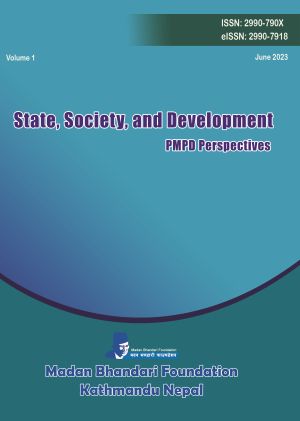Chronicles of Socialist Feminist Movement in Nepal
DOI:
https://doi.org/10.3126/ssd.v1i1.58465Keywords:
PMPD, Socialist feminism, Gender parity, Women movement, Gender conciousnessAbstract
The women’s movement in Nepal has completed a centenary since Yogmaya Neupane demanded the inception of a Dharma Rajya (righteous governance) in the second decade of the twentieth century. Neupane pioneered her movement to end all kinds of oppression and evil practices prevailing in Nepali society during the Rana regime. The spirit of Neupane’s movement continued to spiral out in all the subsequent movements in the country. In the middle of the twentieth century, the anti-Rana regime movements initiated by political parties also incorporated women’s issues in their policy documents. In this context, the Nepal Women’s Association (NWA) was established under the leadership of Mangaladevi Singh in 1947. The NWA’s major leadership supported the Delhi Accord, alienating some of the leftist women. Consequently, they formed the All Nepal Women’s Association (ANWA) under the leadership of Kamakshadevi Basnet in 1950. Despite their ideological differences, all women’s organizations collaboratively contributed to political and rights movements in the country. The political parties also reciprocated Nepali women’s commendable contribution to democracy. The most remarkable contribution is Madan Bhandari’s “People’s Multiparty Democracy (PMPD): A Program of Nepali Revolution,” which has incorporated the aspiration of the socialist feminist perspective. It has not only incorporated some of the special provisions for equitable rights for women but also influenced all subsequent movements and constitutional and legal provisions. The much-appreciated women’s rights specified in the Constitution of Nepal 2015 resonate with many of the provisions inscribed in PMPD.
Downloads
Downloads
Published
How to Cite
Issue
Section
License
Once published, an article in this Journal is not permitted to publish in other journals or similar publications without the permission of the Foundation. Contents and perspectives presented in the articles in the journal are solely of the authors.




